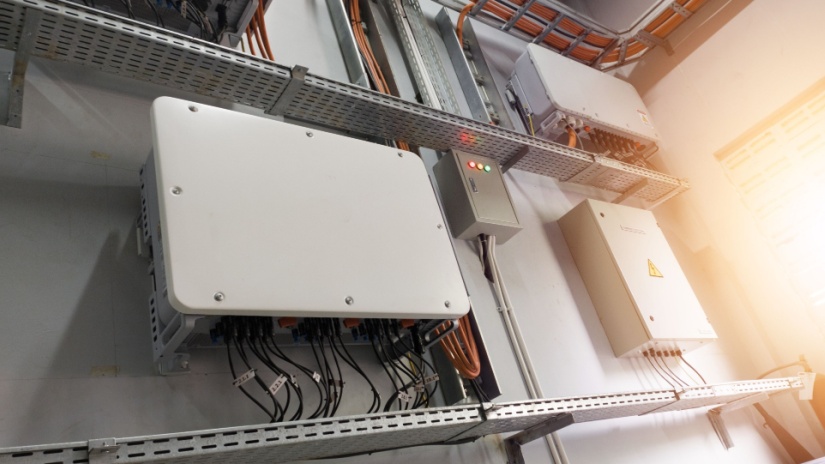How big batteries actually work - and why we need so many of them

Australia is going through an energy transformation. With more renewable energy feeding into the electricity grid than ever before, the country faces a big challenge - how to store that energy for when it’s actually needed.
This is where big batteries come in.
These large-scale energy storage systems are becoming a vital part of how the nation powers homes and businesses. But how do they actually work, and why is there such a push to build more of them?
What a big battery actually is
A big battery is not that different from the one found in a phone or a laptop - just much larger and more powerful. It stores electricity so that it can be used later.
While a household battery might hold enough energy to keep a few appliances running during a blackout, a big battery can power entire suburbs or help stabilise the grid during times of high demand.
These systems are often made up of thousands of smaller battery cells that are linked together. Each cell holds a small amount of charge, but when combined, the entire system becomes a powerful energy reserve.
Most large-scale batteries use lithium-ion technology - the same basic type of battery found in many everyday devices - although other types like flow batteries and sodium-ion are starting to gain attention.
Charging and discharging: The basics
Big batteries work by charging up when there is more energy being produced than consumed. For example, during the middle of the day, solar farms often produce more electricity than the grid needs. Rather than letting that energy go to waste, it can be sent to a battery for storage.
Later in the evening, when people are cooking dinner and switching on lights and appliances, demand rises. If solar production has dropped because the sun has set, the stored energy can then be released back into the grid to meet that demand.
This process of charging and discharging happens automatically, thanks to smart systems that track electricity supply and demand in real time. These systems decide the best moments to store energy or release it, helping keep the grid stable and reliable.
Keeping the grid balanced
The electricity grid needs to stay in balance at all times. That means supply must always match demand. If too much energy enters the grid, or if not enough is being produced, the entire system can become unstable. This could lead to blackouts or damage to infrastructure.
Big batteries are incredibly useful in these moments. They can respond much faster than traditional power stations, often within milliseconds. That speed makes it possible to smooth out sudden spikes or drops in electricity use.
For example, if a coal power station trips unexpectedly, the grid could suddenly lose a large chunk of supply. A big battery can instantly discharge energy to fill the gap, preventing outages. In the same way, if too much solar power is flooding the grid, the battery can absorb the excess and store it for later.
Why more are being built across Australia
Australia has some of the best conditions in the world for renewable energy. Solar and wind farms are being built in almost every state. But these sources of energy are not always available when demand is highest. Solar panels don’t work at night, and wind farms can be still on calm days.
Because of this, there is growing investment in energy storage. The more renewable energy the country builds, the more batteries are needed to make that energy useful at all hours of the day. Without storage, much of the energy produced during sunny or windy periods could go unused.
Big batteries also reduce the need for expensive upgrades to the electricity network. Instead of building more poles and wires to handle peaks in demand, a battery can support the local area by supplying stored energy right when it’s needed most. This can make the whole system cheaper and more efficient over time.
Not just backup - part of a smarter system
Some people still think of batteries as only backup power, but that idea is changing fast. A big battery does much more than just step in during emergencies. It helps create a more flexible and responsive grid, one that can adjust to new challenges as the energy mix changes.
In fact, many big batteries in Australia are already making money by providing what are called “grid services”. This includes keeping the frequency of the electricity steady and supporting voltage levels. These tasks might sound small, but they are essential for keeping the power flowing smoothly.
By doing this, a big battery plays an active role in the daily operation of the electricity system. It supports renewables, boosts reliability, and helps keep energy prices in check by reducing the need to turn on expensive gas power stations during peak times.
Looking to the future
The energy landscape in Australia is shifting fast. Coal plants are closing, and renewables are taking over. That transition comes with risks, but also massive opportunities. Big batteries are a key part of making it all work.
More projects are being announced every month, including some of the biggest batteries in the world. These will help the country store clean energy, reduce emissions, and keep power reliable for everyone. As the technology improves and costs continue to fall, big batteries will only become more important.
Go solar with Compare Energy
What was once seen as a future technology is now a central part of today’s electricity system - and it’s just the beginning. To learn more about how energy storage affects your electricity bills or options, talk to Compare Energy on 1300 790 106.

